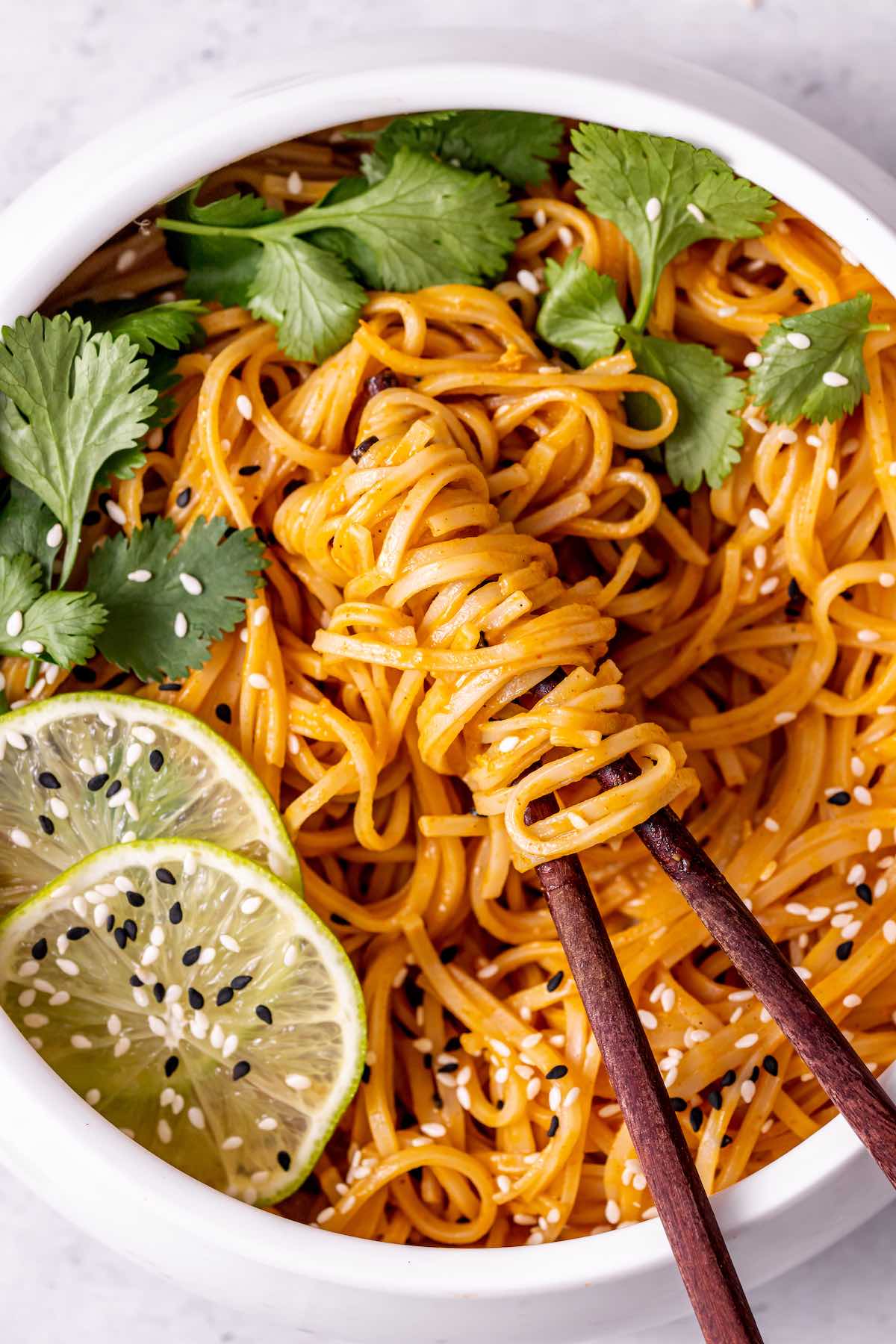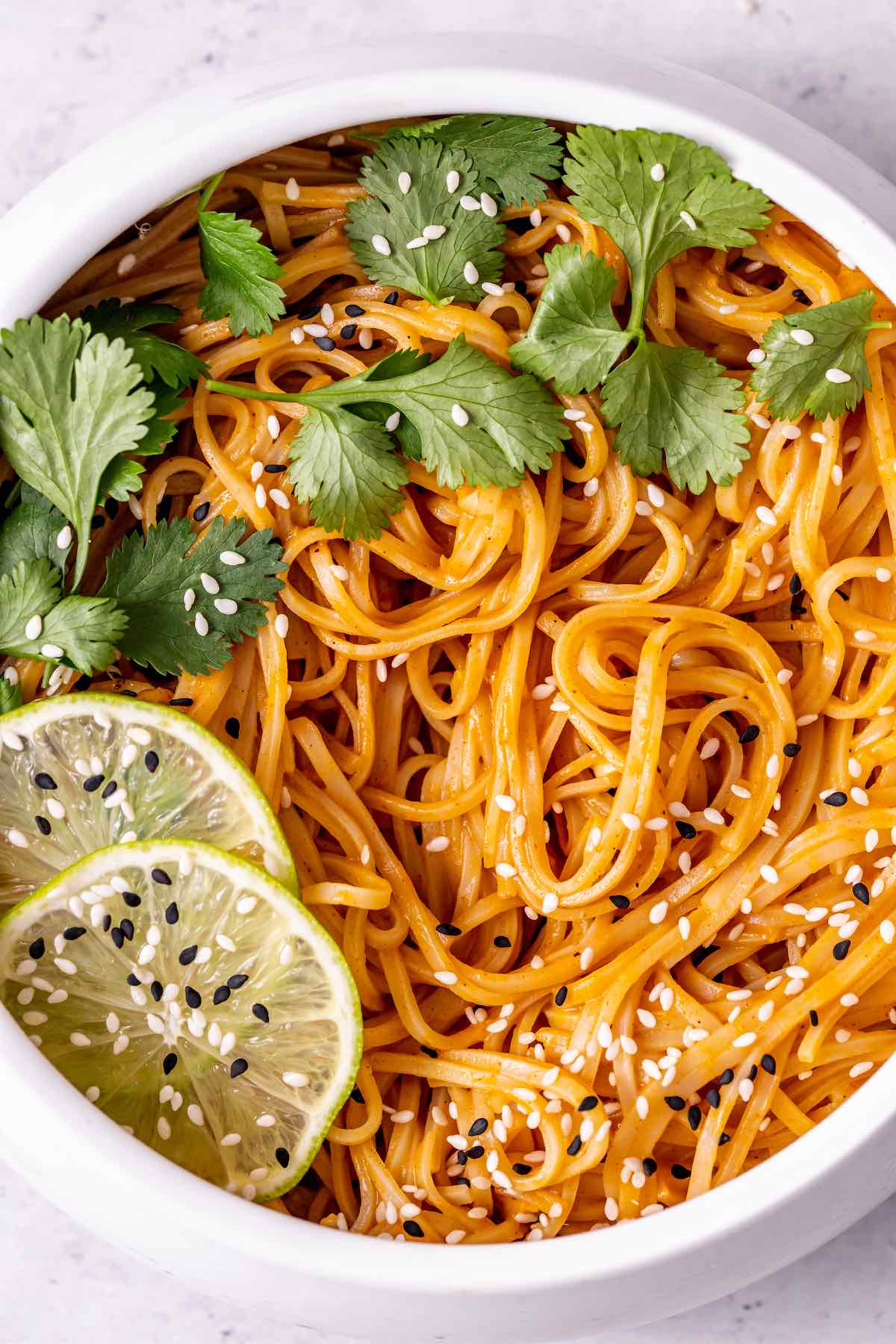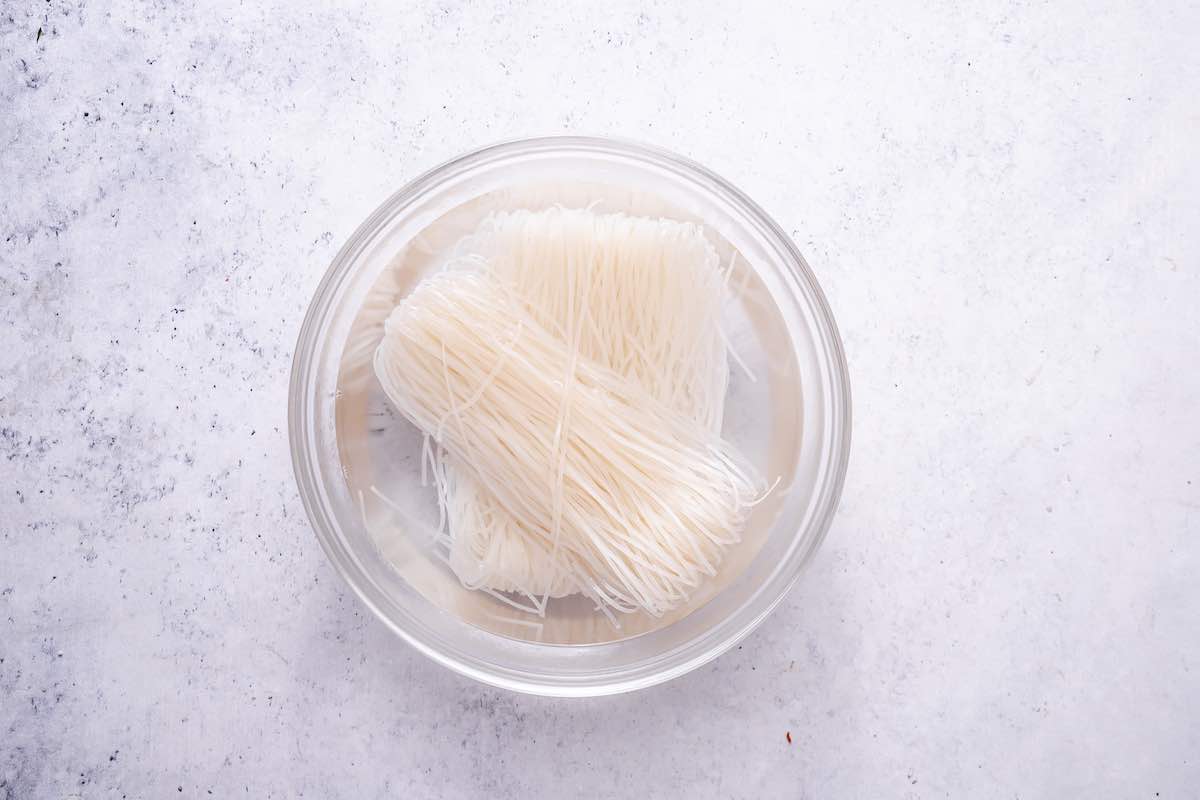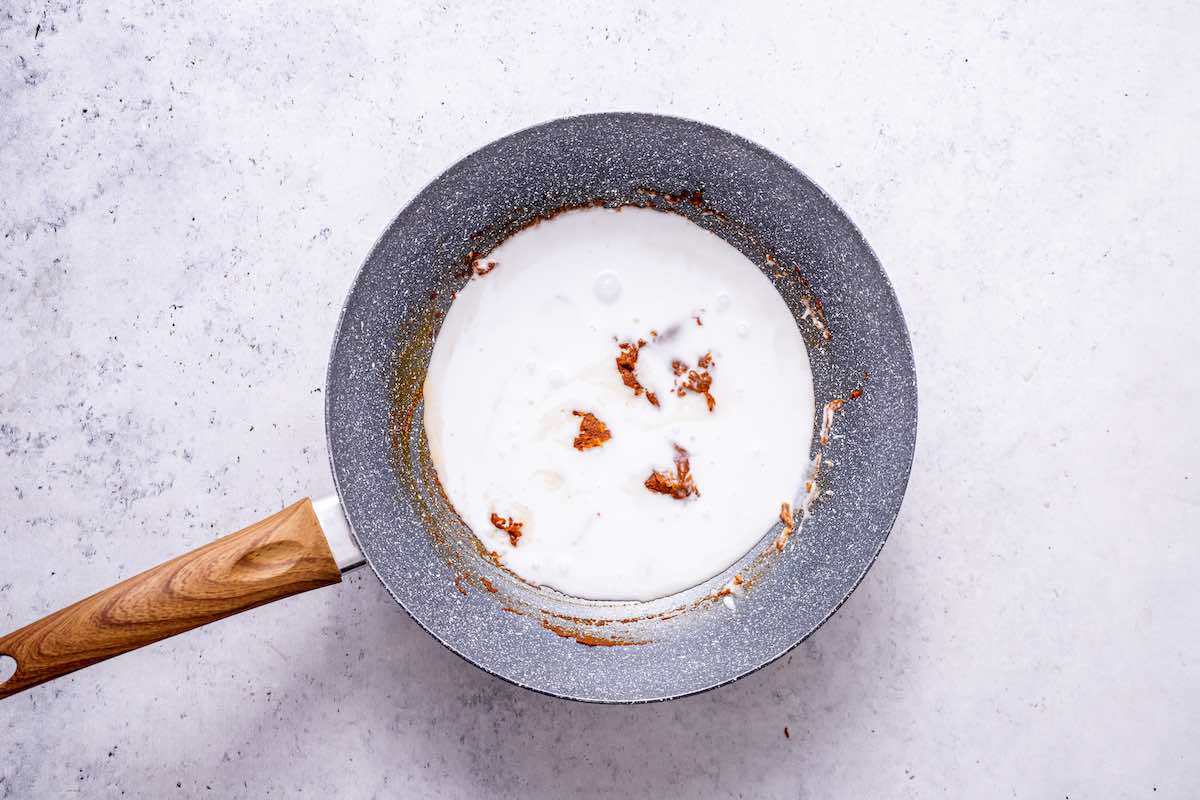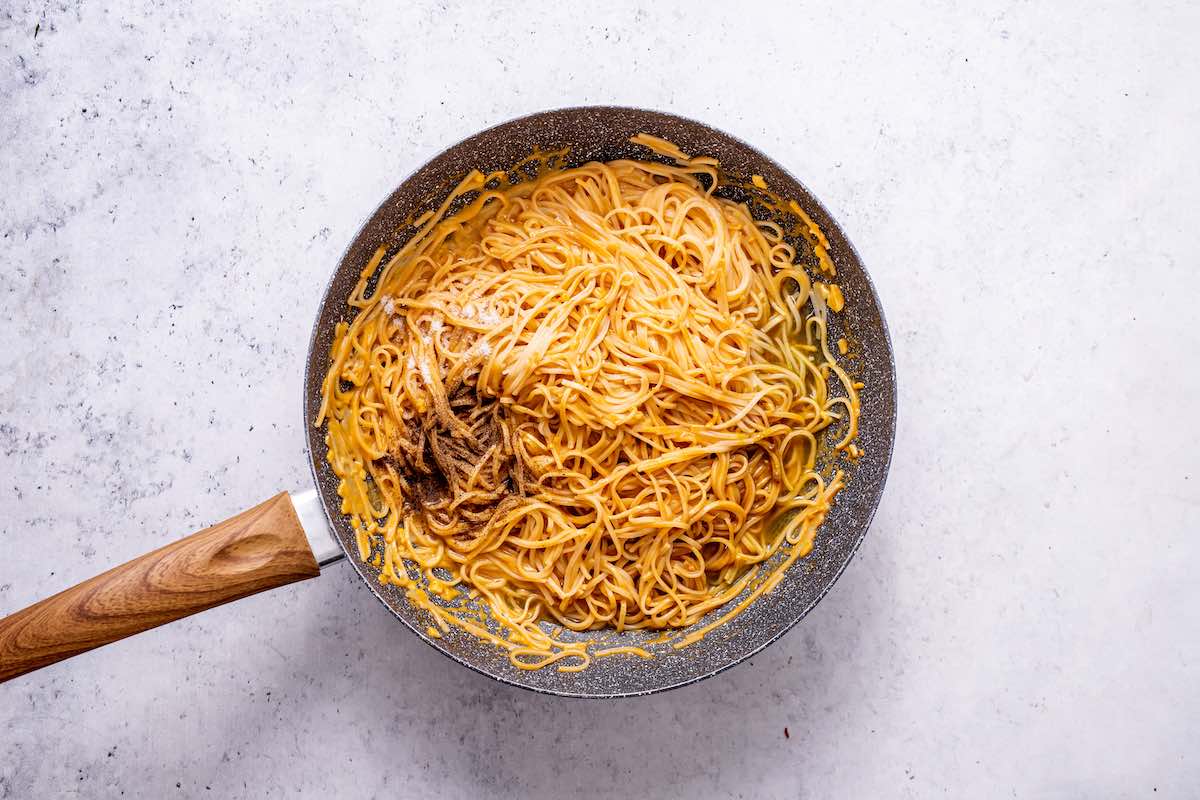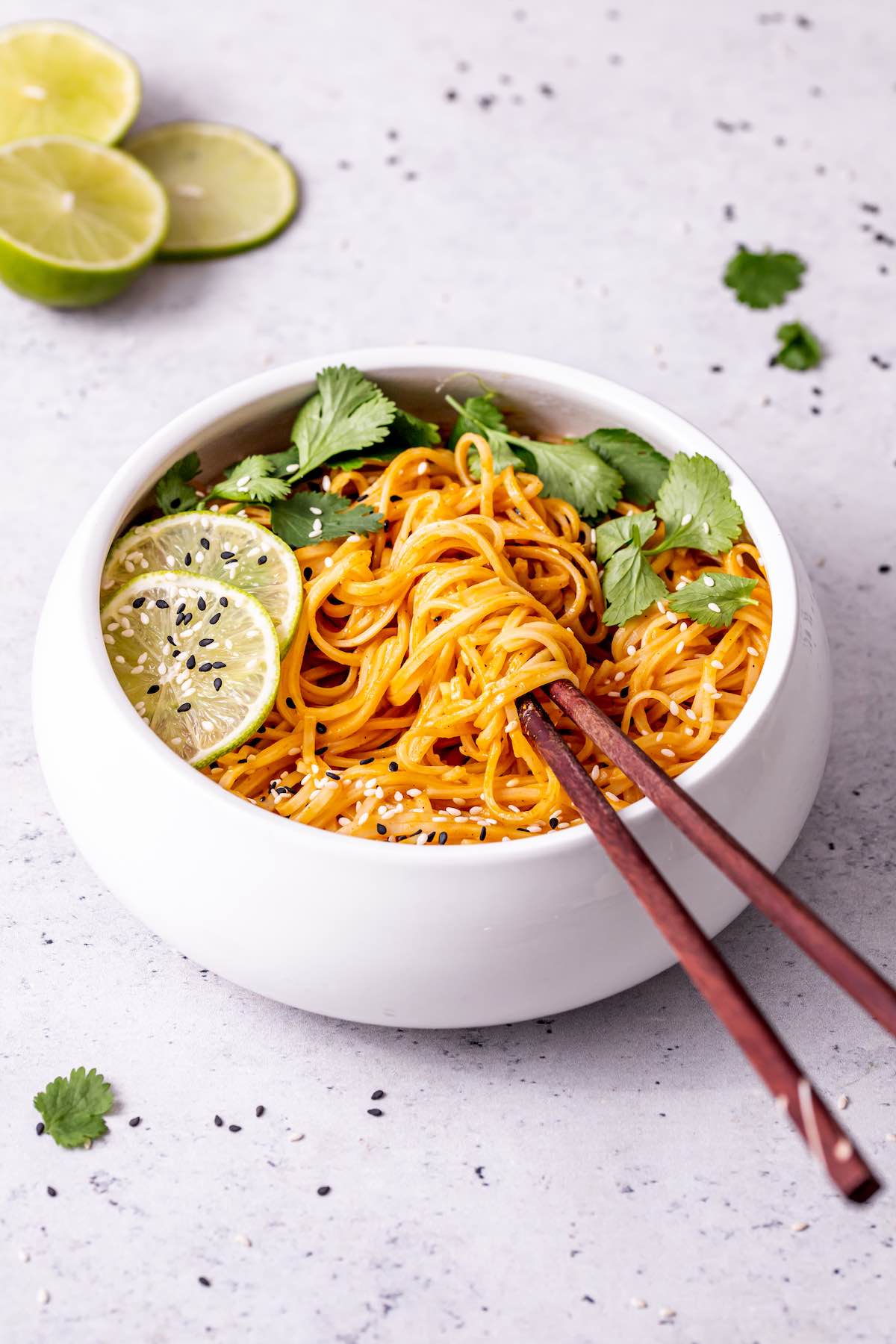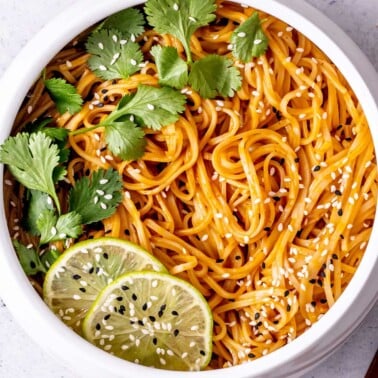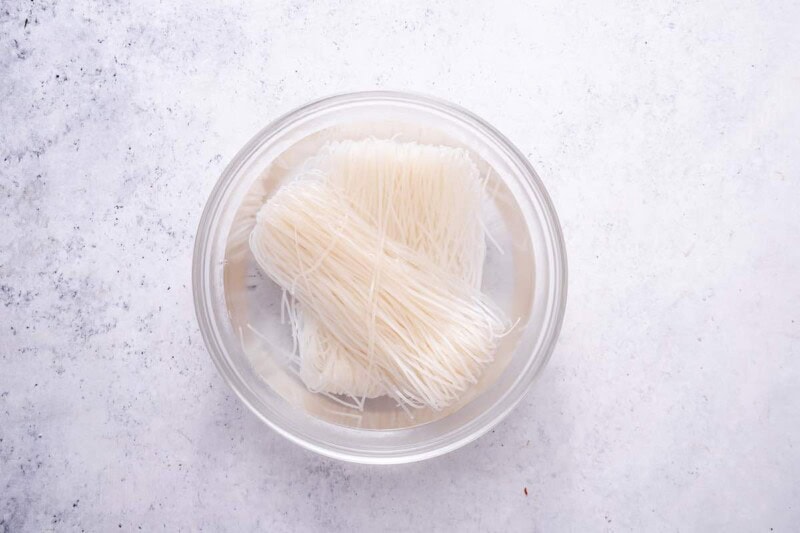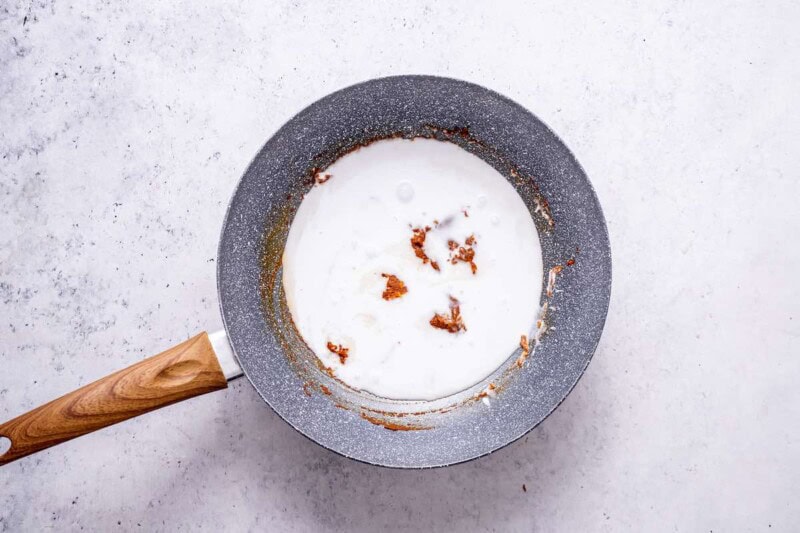Love easy noodle dinners? Try my spicy noodles, Korean spicy noodles, spicy ramen, or birria ramen next. Noodle dishes are some of my favorites because they come together so easily and always feature a layered, flavorful sauce. These red curry noodles are no different! It’s an easy Thai-inspired recipe that puts red curry sauce-coated rice noodles on display.
Why I love this recipe
An easy, one-pan recipe. The aromatic, bright, and vibrant red curry sauce comes together in a wok on the stove. Toss in the rice noodles and dinner is on the table in about 10 minutes! Versatile and fun to customize. You can think of my Thai curry noodles as a blank canvas. The noodles and sauce can easily be customized to fit your taste buds, and you can even add veggies or meat to bulk up the meal. Pantry staple ingredients. There is a reason why I call this my pantry weeknight dinner.
Ingredients needed
Rice noodles. Wide rice noodles are my favorite here because they’re not only naturally vegan and gluten-free, but they also scoop up the red curry sauce very easily. Thai red curry paste. Try to use a good quality store-bought red curry paste. I tested these noodles with Thai Kitchen and Taste of Asia, and both were super flavorful. Remember to check the ingredients before you buy- Many jars of red curry paste contain shrimp paste, which is fine if you aren’t vegan but not great for your vegan guests or those with an aversion to shellfish. Garlic. The first of the two aromatics. Fresh garlic cloves give the red curry sauce a savory baseline of flavor. Ginger. The second aromatic in the sauce. Use fresh ginger if you can. Coconut milk. Canned full fat coconut milk is the secret to a luscious and creamy sauce. It also tones down the heat from the red curry paste. Soy sauce. Or you can use tamari if you’re gluten-free. Maple syrup. For a subtle sweetness. Agave will also work well as a substitute. I don’t recommend honey because it’s quite overpowering and can take over the whole dish. Lime juice. The acidity from the fresh lime juice helps round out the rest of the flavors and gives the dish a nice, refreshing pop! Vegetable stock. To help thin out the sauce. Fresh coriander and sesame seeds. For garnish.
How to make curry noodles
I’ve included step-by-step photos below to make this recipe easy to follow at home. For the full printable recipe instructions and ingredient quantities, scroll to the recipe card at the bottom of this post.
Arman’s recipe tips
Don’t overcook/oversoak the noodles. The rice noodles should be just about al dente when they’re done soaking. You want them to still have a slight bite because they’ll continue to cook and soften when tossed in the sauce. If you don’t have a wok, you can use a large non-stick skillet or cast iron skillet instead. Use metallic tongs to toss the noodles with the sauce to ensure they are evenly coated so every bite is a flavor explosion. For the ultimate curry fix, use these noodles as a base for my paneer tikka masala or an eggplant curry.
Storage instructions
To store: Keep the leftover sauce-covered noodles in an airtight container in the fridge. They should stay fresh for up to 5 days. This is a fun recipe to customize with different add-ins and flavor enhancers. Use these ideas for inspiration:
If red curry paste is too spicy: Use only 2 tablespoons instead. Alternatively, yellow curry paste can be used as a more mild substitute. Bulk it up with vegetables! All kinds of vegetables can be sauteed in the pan with the garlic and ginger, like bell peppers, spicy chili peppers, carrots, edamame, scallions, broccoli, cauliflower, bok choy, and more. Or add protein: Baked or air fryer tofu would fit in perfectly here. Otherwise, feel free to top each bowl with cooked shrimp, sliced baked chicken breast, or pan seared salmon to make this a filling meal.
To reheat: Either reheat the noodles in the microwave or warm them in a skillet on the stove. Add a splash of vegetable broth or water to the pan to help loosen the sauce.
Frequently asked questions
More quick and easy dinners
Tuna patties Sesame chicken Cauliflower fried rice Salmon croquettes
Originally published April 2023, updated and republished September 2024
